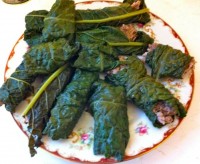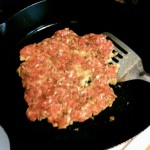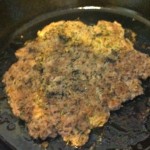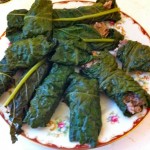a REVERSIBLE poem about nutrition
by Joe Disch
(Read top to bottom for the “standard advice”, then from bottom to top to update it!)
Our elders’ wisdom is finally being reconsidered
Modern foods are healthier
No longer do we simply accept
The habits of those who came before us
Now we have learned the scientific wisdom of a diet based on
Whole grains like wheat, corn, and rice
We’ve given ourselves the “diseases of civilization” with
Saturated fats and cholesterol
According to scientific studies,
What’s the better choice?
Refined seed oils like canola, corn, and soy
And we understand we should avoid
Red meat – studies have confirmed it time and again
Everyone knows about the importance of
“This good nutritious breakfast, fortified with 8 essential vitamins and minerals”
We no longer expect to start our day with
Eggs (especially the yolks – full of cholesterol your body makes even if you don’t eat it)
If there were a single most nutritious food, what might it be?
Modern low fat, pasteurized, homogenized dairy products
Many people don’t do well with
Things like whole, full-fat dairy foods – especially raw milk due to the live cultures
Some are better adapted to what might not be a good choice for others
Listen to your body
Common sense really
Eating fat is
What makes you fat
A higher carb diet is
So obviously
As nature intended
Insulin stores any extra carbs before they can cause damage
When you eat heavily of grains and starches
“Calories in, calories out” is just the simplest math
Your body is so smart
It’s important to portion your plate to meet your body’s energy needs
We now have too many people to feed the conventional way
Soil is becoming depleted of nutrients
Chemical inputs and genetic modification
May in fact be the only viable solution to replace
The gentle dance of traditional, restorative, organic agriculture
Well intentioned ideas sometimes can’t keep up with the realities of life
Move, play, laugh, love
Be sure to get plenty of sleep
Stay hydrated with clean healthy water
Eat a variety of healthy foods, including lots of vegetables
Unless we want to get sicker and sicker
We need to think about where we came from as well as where we’re going
Lessons are learned, and knowledge evolves
(Now read from bottom to top for a different perspective)
“Knowledge Evolves” Copyright 11/25/2015 by Joe Disch. Visit madisonpaleo.com for more of Joe’s work. Not intended as nutritional or medical advice. Offered as an artistic perspective on opposing viewpoints. Permission granted to republish as is, as long as this paragraph is included in its entirety. Links/canonical tags appreciated where appropriate.














